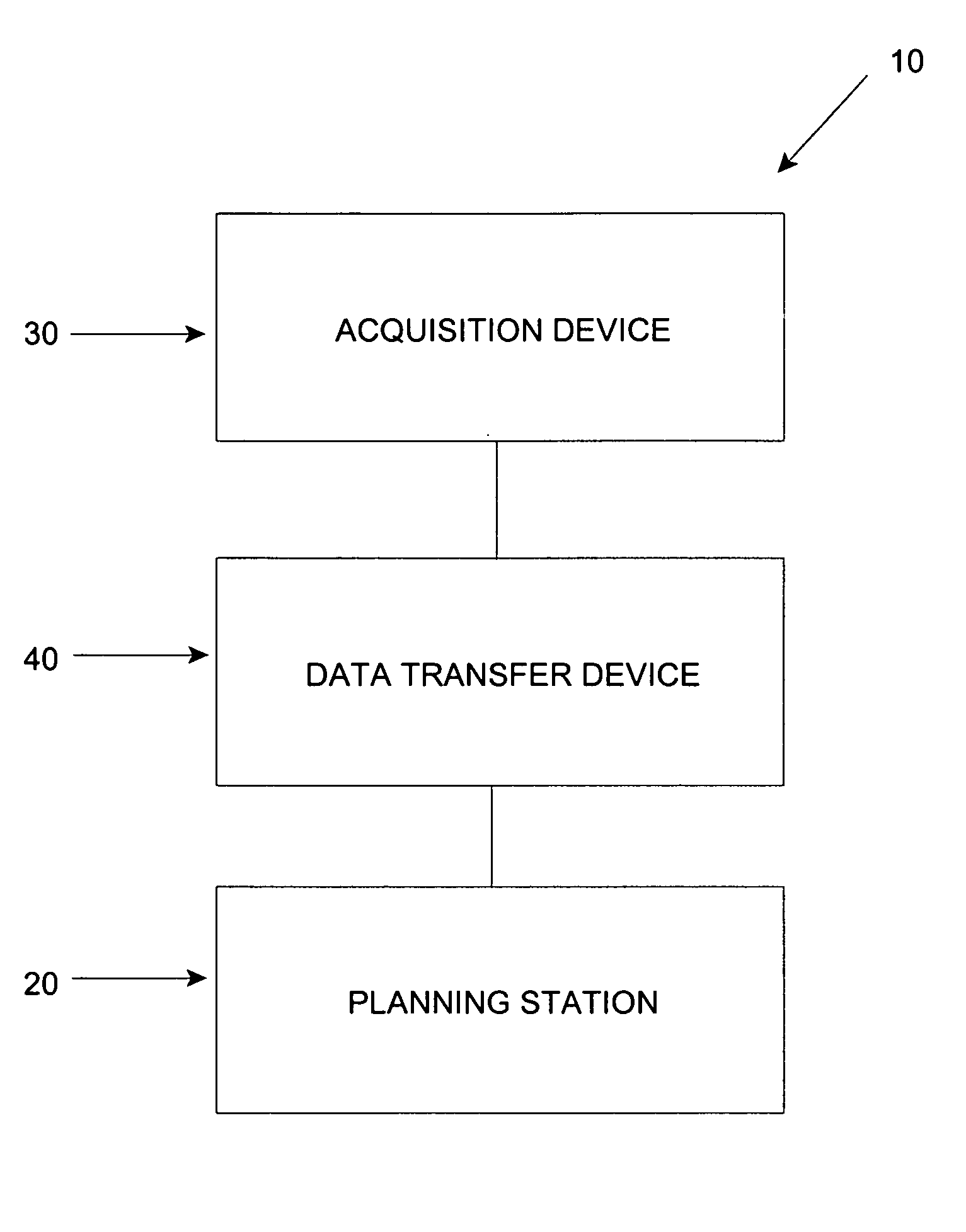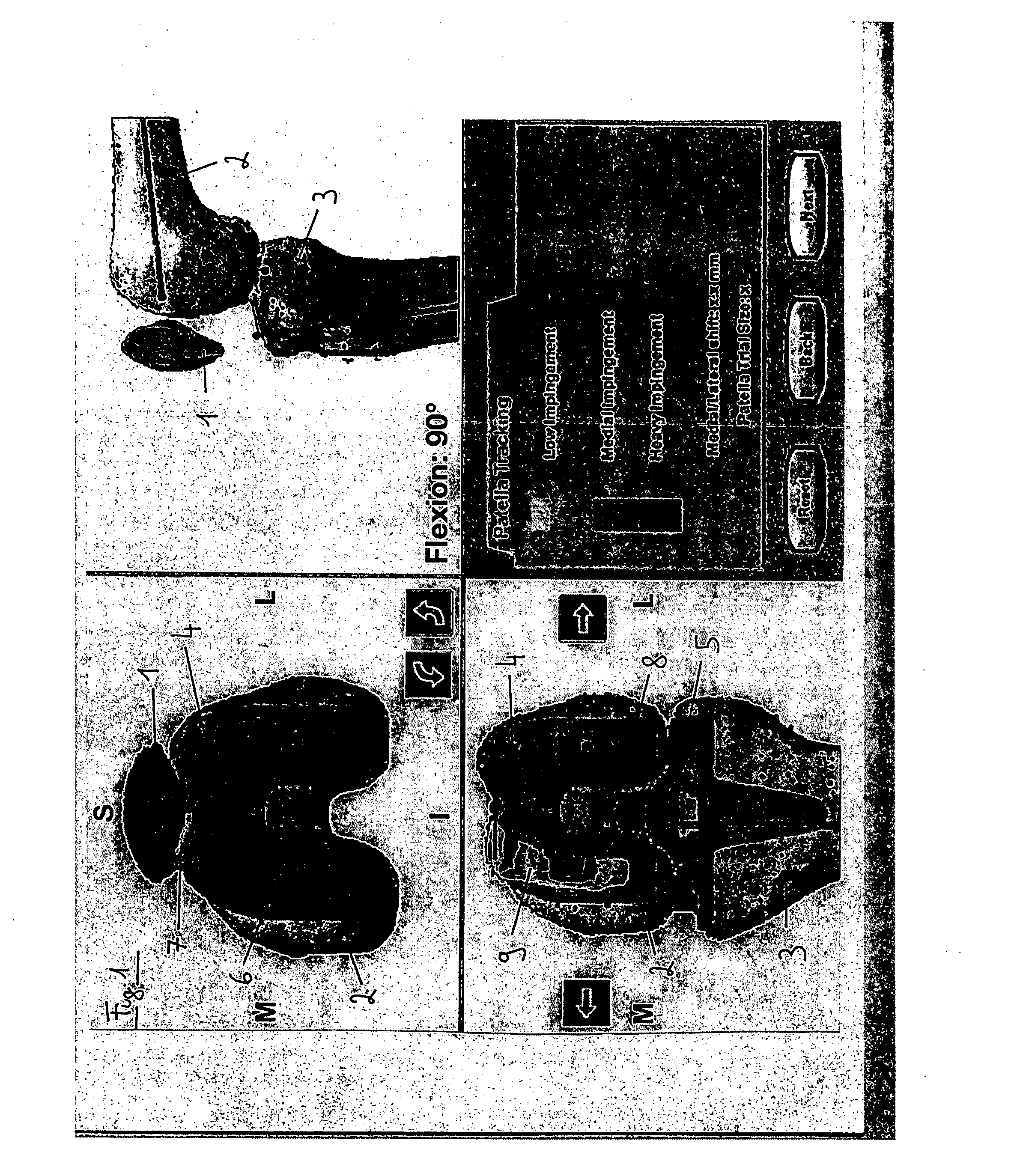Planning method and planning device for knee implants
a planning method and technology for knee implants, applied in the field of knee implants planning methods and devices, can solve the problems of insufficient realistic simulation, point-by-point tracking or motion capture for individual points, and low yield of relative movement and contact information
- Summary
- Abstract
- Description
- Claims
- Application Information
AI Technical Summary
Benefits of technology
Problems solved by technology
Method used
Image
Examples
Embodiment Construction
[0020] Advantages of the present invention are based on the fact that the patient's genicular anatomy is detected spatially and / or according to its surface contour, such that contact and impingement between the implant and the parts of the genicular anatomy can be detected and simulated far more extensively and with a far higher yield of information. On the basis of these results, a possible problem in a currently proposed implant positioning can then be identified far more precisely than previously, and the positioning can be adjusted until the problem no longer arises.
[0021] In other words, the invention is also a part of the patella tracking function of a surgical, computer-assisted planning system. The general idea is also to track the movement of the patella towards the femur, wherein as a post-operative result, the patella or a patella implant should slide on the femur or femur implant in such a way that the patient does not feel any pain at the rear or front part of the pate...
PUM
 Login to View More
Login to View More Abstract
Description
Claims
Application Information
 Login to View More
Login to View More - R&D
- Intellectual Property
- Life Sciences
- Materials
- Tech Scout
- Unparalleled Data Quality
- Higher Quality Content
- 60% Fewer Hallucinations
Browse by: Latest US Patents, China's latest patents, Technical Efficacy Thesaurus, Application Domain, Technology Topic, Popular Technical Reports.
© 2025 PatSnap. All rights reserved.Legal|Privacy policy|Modern Slavery Act Transparency Statement|Sitemap|About US| Contact US: help@patsnap.com



